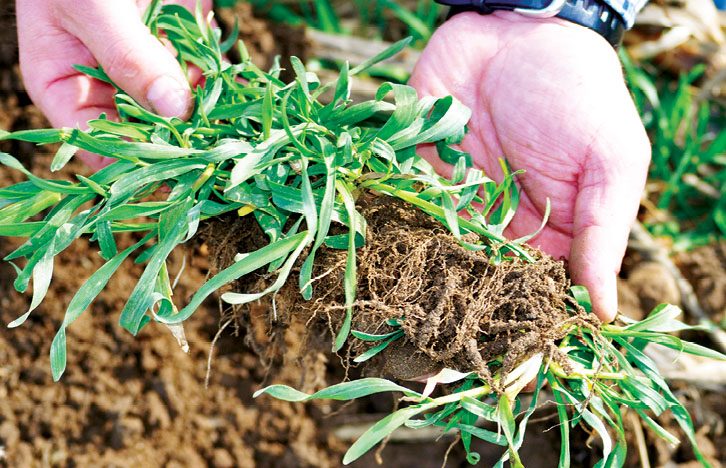By: Forrest Laws
The fall of 2022 seems a long way off for growers trying to protect their current crop. Cover crop advocates say it will be here before you know it.
“Many farmers are thinking about cover crops to help with pigweed control or reduce fertility or other expenses,” says Dr. Bill Robertson. “They’re on the fence, but they need to be making decisions now.”
He offers seven points for growers to consider in cover crop planning.
What to plant? “You may need to order seed by June or July,” says Robertson, Extension cotton specialist for Arkansas. “Cereal rye seed may disappear quickly. For cotton and beans, I want to have a high percentage of my cover crop mix in cereal rye.”
For newcomers, Robertson suggests cereal rye. “It has a more extensive root system, and the things it brings to the table are better than winter wheat,” he says. It’s easy to establish, easy to terminate. But wheat is better than nothing.”
Another note: Start small. “Do just a few fields.”
Cost share. “The USDA-NRCS has programs, but, generally, there’s not enough money to do the whole farm,” he says. “The cost share gives you a cushion if you stump your toe and it costs you money. Often, the cost share is for three years.”
While Robertson believes in starting with something simple, NRCS provides more cost share for multiple species. “You could have cereal rye, a triticale blend and, if you’re planting early, a tillage radish. They don’t tell you how much of each to plant, but I don’t like to spend more than $25 an acre for cover crop seed.”
How and when to plant. “Most people don’t have a drill,” he says. “The best approach I’ve had is flying seed in or spreading it ahead of my first defoliation. With cereal rye, triticale, tillage radish, and hairy vetch, I’ve gotten a good stand if you have enough moisture to germinate and keep it growing.”
Robertson has flown on 20 pounds of cereal rye, 20 pounds of triticale, 2 pounds of tillage radish, and 1.5 pounds hairy vetch. “That’s 43.5 pounds of seed per acre. More will cost too much. With cereal rye alone, I would shoot for 50-60 pounds per acre.”
Some growers harvest, cut the stalks, and plant covers with a fertilizer buggy. “That can put you into November when there aren’t many heat units left. Unless you have a warm December, you won’t get much growth.”
Planting into covers. “Cover crops don’t have to be thick,” he says. “The main thing is to have good down pressure on your planter. A double disk opener or fluted coulter can help.”
When to terminate. “When cereal rye heads start emerging to full head exertion, often in early April, that’s the sweet spot for me. That provides enough time to prevent a green bridge from the cover crop to the emerging cotton crop. If your goal is to plant into green standing covers, a diverse mixture of grasses, legumes, and brassicas should be considered.”
More scouting. Cover crop vegetation can support more beneficial insects. “Know what’s in the field before planting. Some growers automatically spray pyrethroids for cutworms, wiping out beneficials. Preserving beneficials can save money in the long run if a pyrethroid behind the planter is not needed.”
Find a mentor. “You need someone who has grown cover crops that you can lean on for advice and guidance.”





Post a comment
Report Abusive Comment